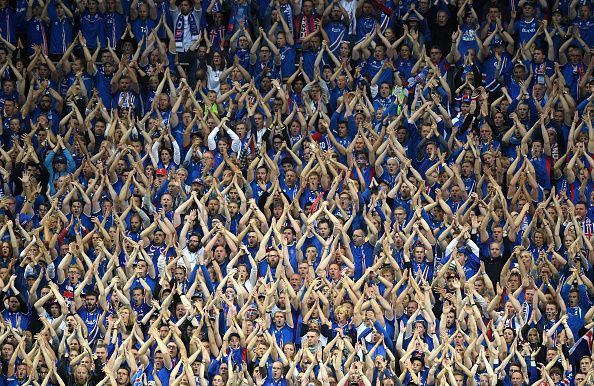
Ashes to Fire: the rise of Icelandic football
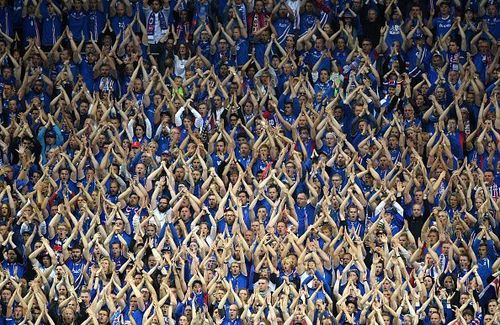
The iconic Viking Clap was in full play as thousands of fans headed towards the streets of downtown Reykjavik. Those who were lucky enough to get a ticket for Iceland's final qualification match witnessed history.
For the first time ever, the Icelandic men's football team made it to football's grandest stage: the World Cup! A heart-breaking 2-0 playoff defeat to Croatia ended their dream of making it to the 2014 World Cup. Fast forward four years, placed in a group with European strongholds Croatia, Ukraine, and Turkey, the Nordic warriors defied all odds as they finished top of their qualification group with 22 points, two more than Croatia!
Displaying a strong and gritty character, the Icelanders, led by their charismatic captain Aron Gunnarsson, entered Volcanic folklore. The tiny volcanic nation, with a population of 350,000 is the smallest country to qualify for a football World Cup. Goals from Gylfi Sigurdsson and Johann Gudmundsson handed Iceland a 2-0 victory over Kosovo in their final group game.
Their exploits in last year’s European Championships earned them rave reviews and the success achieved over the last three years has been nothing short of miraculous. But, to box it all to a miracle would be incorrect. As much as they were the underdog, Iceland had a plan all along. A plan to rise to the upper reaches of the footballing world. This was no mere small feat. The Icelandic mentality to take a small task and do it till death is what sets them apart from the rest of us. It is why they’ve been able to build one of the top financial institutions in the world. And, it is this small island togetherness that has helped them achieve the impossible every single time.
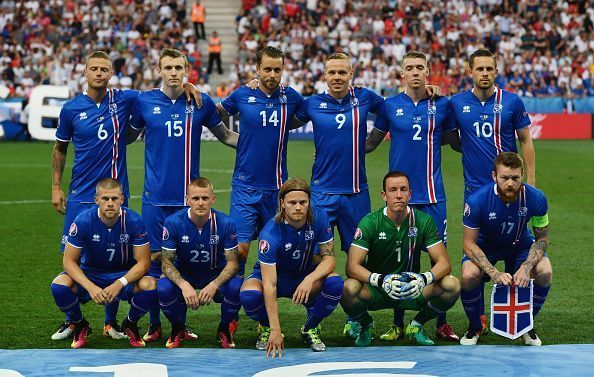
Iceland’s obsession with football was non-existent till the turn of the millennium. The National Football Association had no money or resources at their disposal. The country's notable contribution to football until then was the former Chelsea and Barcelona striker, Eiður Guðjohnsen. Educated in Belgium, he moved to England at an early age. Icelandic by birth, Guðjohnsen was a product of the Belgium and English football systems. The volcanic nation was not in a position to give him or aspiring footballers the necessary tools to develop their craft.
It was around this time that a new TV deal filled the UEFA coffers. They decided to funnel the money to develop football in smaller European nations. The TV millions soon flew into Reykjavik. The FA had full control of what they could do with this money. Build a bigger national stadium? A new swanky office? They were having none of it. That was not the Icelandic way of doing things.
Years ago, Italian manager, Arrigo Sacchi suggested that top-level football coaching should be open to everyone. And, Iceland made this happen. They built a state-of-the-art training scheme that was open to all. Residents from all walks of life enrolled in the program. To this date, Iceland has about 700 qualified coaches, with 400 having a UEFA B License, and over 100 having the UEFA A License. That equates to one top qualified coach per 900 people.
The purpose of this exercise was simple: to ensure top-quality coaching was available at every level. You could be a kid starting out, playing at the U13 level or U18 Level, but it didn’t matter. The kids pay an annual coaching fee which in turn goes out as salaries to the coaches. An iron-clad system built to ensure top-quality training was available right from the start.
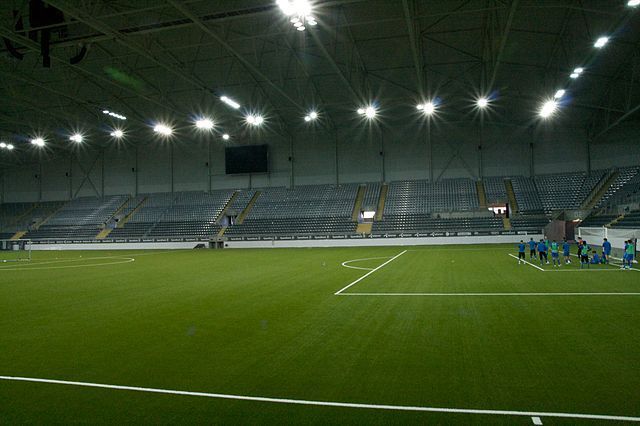
With TV money continuing to pour in, Iceland went ahead and invested it in facilities! Top class training facilities and football pitches built in partnership with local clubs and businesses. Putting up vast indoor football halls across the nation, a high-level training facility was accessible to everyone. Coupled with the constant presence of qualified coaches, these halls are open to all!
The FA had a third project running in parallel. They’d bought land next to schools, and began building football pitches. Covered by a timber roof and laid with artificial turf, these vast indoor football pitches are a sight to behold. From the capital to the most deprived areas of Iceland, all of the regions have one of these facilities in place, packed with kids and coaches.
The indoor footballing halls of Iceland are nothing new. Yet, there is something special about what goes on in there. A heated piece of land in the middle of obscurity. The children are not divided among age groups, but, on skill levels. And, every level receives the highest quality of coaching. This gives an equal chance to the early-risers and the late bloomers. The system is in place to maximize the talent pool.
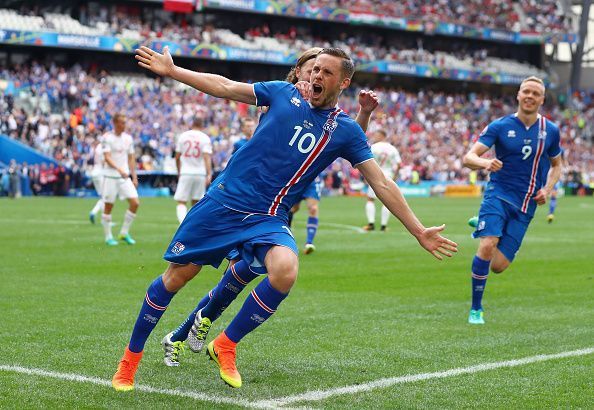
With a dedicated infrastructure in place, the country has been churning out quality footballers, many of whom are toiling in the top European leagues. It is no miracle that Iceland has risen to its current heights. Manager, Heimir Hallgrímsson recounts laughing at his predecessor Lars Lagerback's claims that they could qualify for the 2014 World Cup. Lagerback, billed as the liberator of the volcanic island, paved the way for many of the youngsters coming out of the football halls to the national team. His Nordic tenacity was synchronous with their footballing philosophy.
Lagerback, Hallgrímsson and the nation have reaped the benefits of the strong foundations laid by a functional FA, one that focused on the betterment of the sport. Currently ranked 22 in the world, it will be fascinating to see how this story unfolds in Russia.